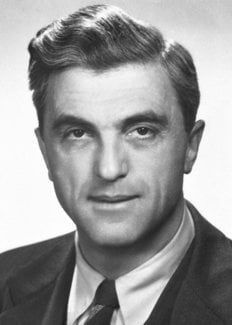Felix Bloch
Biographical

Felix Bloch was born in Zurich, Switzerland, on October 23, 1905, as the son of Gustav Bloch and Agnes Bloch (née Mayer). From 1912 to 1918 he attended the public primary school and subsequently the “Gymnasium” of the Canton of Zurich, which he left in the fall of 1924 after having passed the “Matura”, i.e. the final examination which entitled him to attend an institution of higher learning.
Planning originally to become an engineer, he entered directly the Federal Institute of Technology (Eidgenössische Technische Hochschule) in Zurich. After one year’s study of engineering he decided instead to study physics, and changed therefore over to the Division of Mathematics and Physics at the same institution. During the following two years he attended, among others, courses given by Debye, Scherrer, Weyl, as well as Schrödinger, who taught at the same time at the University of Zurich and through whom he became acquainted, toward the end of this period, with the new wave mechanics. Bloch’s interests had by that time turned toward theoretical physics. After Schrödinger left Zurich in the fall of 1927 he continued his studies with Heisenberg at the University of Leipzig, where he received his degree of Doctor of Philosophy in the summer of 1928 with a dissertation dealing with the quantum mechanics of electrons in crystals and developing the theory of metallic conduction. Various assistantships and fellowships, held in the following years, gave him the opportunity to work with Pauli, Kramers, Heisenberg, Bohr, and Fermi, and to further theoretical studies of the solid state as well as of the stopping power of charged particles.
Upon Hitler’s ascent to power, Bloch left Germany in the spring of 1933, and a year later he accepted a position which was offered to him at Stanford University. The new environment in which he found himself in the United States helped toward the maturing of the wish he had had for some time to undertake also experimental research. Working with a very simple neutron source, it occurred to him that a direct proof for the magnetic moment of the free neutrons could be obtained through the observation of scattering in iron. In 1936, he published a paper in which the details of the phenomenon were worked out and in which it was pointed out that it would lead to the production and observation of polarized neutron beams. The further development of these ideas led him in 1939 to an experiment, carried out in collaboration with L.W. Alvarez at the Berkeley cyclotron, in which the magnetic moment of the neutron was determined with an accuracy of about one percent.
During the war years Dr. Bloch was also engaged in the early stages of the work on atomic energy at Stanford University and Los Alamos and later in counter-measures against radar at Harvard University. Through this latter work he became acquainted with the modern developments of electronics which, toward the end of the war, suggested to him, in conjunction with his earlier work on the magnetic moment of the neutron, a new approach toward the investigation of nuclear moments.
These investigations were begun immediately after his return to Stanford in the fall of 1945 and resulted shortly afterward in collaboration with W.W. Hansen and M.E. Packard in the new method of nuclear induction, a purely electromagnetic procedure for the study of nuclear moments in solids, liquids, or gases. A few weeks after the first successful experiments he received the news of the same discovery having been made independently and simultaneously by E.M. Purcell and his collaborators at Harvard.
Most of Bloch’s work in the subsequent years has been devoted to investigations with the use of this new method. In particular, he was able, by combining it with the essential elements of his earlier work on the magnetic moment of the neutron, to remeasure this important quantity with great accuracy in collaboration with D. Nicodemus and H.H. Staub (1948). His more recent theoretical work has dealt primarily with problems which have arisen in conjunction with experiments carried out in his laboratory.
In 1954, Bloch took a leave of absence to serve for one year as the first Director General of CERN in Geneva. After his return to Stanford University he continued his investigations on nuclear magnetism, particularly in regard to the theory of relaxation. In view of new developments, a major part of his recent work deals with the theory of superconductivity and of other phenomena at low temperatures.
In 1961, he received an endowed Chair by his appointment as Max Stein Professor of Physics at Stanford University.
Prof. Bloch married in 1940 Dr. Lore Misch, a refugee from Germany and herself a physicist.
This autobiography/biography was written at the time of the award and first published in the book series Les Prix Nobel. It was later edited and republished in Nobel Lectures. To cite this document, always state the source as shown above.
Felix Bloch died on September 10, 1983.
Nobel Prizes and laureates
Six prizes were awarded for achievements that have conferred the greatest benefit to humankind. The 14 laureates' work and discoveries range from quantum tunnelling to promoting democratic rights.
See them all presented here.
